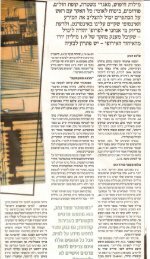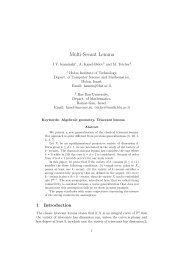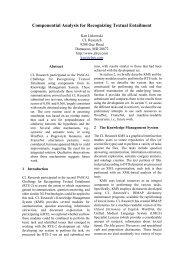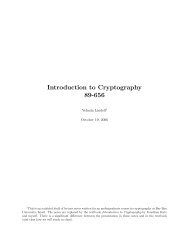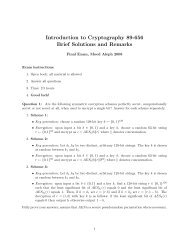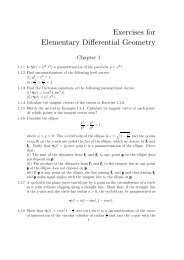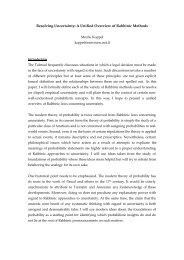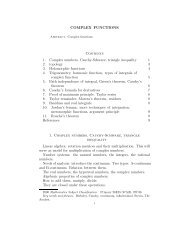Reform of the Julian Calendar as Envisioned by Isaac Newton
Reform of the Julian Calendar as Envisioned by Isaac Newton
Reform of the Julian Calendar as Envisioned by Isaac Newton
Create successful ePaper yourself
Turn your PDF publications into a flip-book with our unique Google optimized e-Paper software.
7<br />
<strong>of</strong> lunisolar <strong>the</strong>ory. We hypo<strong>the</strong>size that first two drafts A1 and A2 were composed much<br />
earlier and only waited for <strong>the</strong> proper time to be published.<br />
The value <strong>Newton</strong> stayed with in writing drafts D1 and D2 w<strong>as</strong> ‘365d 5h 48m 55s.’ Only<br />
this value satisfactorily explains why he believed that <strong>the</strong> Gregorian calendar errs a day in<br />
10,000 years, while his own errs a day in 5,000 years. However, that value leads to <strong>the</strong><br />
continued fraction<br />
365.25 - 365.2423 = 0.0077 = [0,1,3,2,1,7]/100<br />
where <strong>the</strong> l<strong>as</strong>t approximant, 77/10,000, points to <strong>the</strong> cycle <strong>of</strong> 10,000 years, twice <strong>the</strong><br />
greater cycle than finally chosen <strong>by</strong> <strong>Newton</strong>. This means that in <strong>the</strong> actual calendar,<br />
<strong>Newton</strong> did not use this value. A question arises <strong>of</strong> how <strong>Newton</strong> actually obtained <strong>the</strong><br />
values finishing with 55s and 57s.<br />
A table, Annales de L’Observatoire de Bruxelles, taken from <strong>the</strong> NASA Astrophysics Data<br />
System 6 provides <strong>the</strong> following data:<br />
48m 45.5s for 1602 Tycho Brahe (Astron. Instaur progym),<br />
48m 57.6s for 1627 Johannes Kepler (Tabulae Rudolphine),<br />
49m 4.5s for 1645 Boulliaud (Astronomia philolaica),<br />
48m 40s for 1651 Riccioli (Alm. Nov.),<br />
48m 8s for 1665 Street (Carolician tables),<br />
48m 57.5s for 1687 Flamsteed (<strong>Newton</strong>, Principia) 7 , and<br />
48m 34.5s for 1719 Edmond Halley (Tabulae Astronom).<br />
The most remarkable feature <strong>of</strong> this table is that Flamsteed adopted a value almost<br />
identical to that <strong>of</strong> Kepler while disregarding what w<strong>as</strong> found later <strong>by</strong> his close<br />
contemporaries. The bridge between <strong>the</strong> two <strong>as</strong>tronomers w<strong>as</strong> Jeremiah Horrox. Though it<br />
is an open question why <strong>Newton</strong> stayed for a while with Tycho’s value, we can tell why he<br />
later switched to Kepler’s. An immediate answer is that Flamsteed picked up <strong>the</strong><br />
Horroxian lunar <strong>the</strong>ory toge<strong>the</strong>r with its major parameters, like mean solar and lunar<br />
motions, while Horrox largely adopted Kepler’s values. Collaborating in <strong>the</strong> late 1690s<br />
6<br />
Web site at .<br />
7<br />
We did not find in Principia any support for <strong>the</strong> value <strong>as</strong>cribed to Flamsteed. However<br />
this is exactly <strong>the</strong> value we deduced from <strong>Newton</strong>’s 1702 Theory <strong>of</strong> <strong>the</strong> Moon’s Motion<br />
[2]. The value we deduced from Horroxian tables [1] is 365d 5h 48m 59.5s.<br />
7



